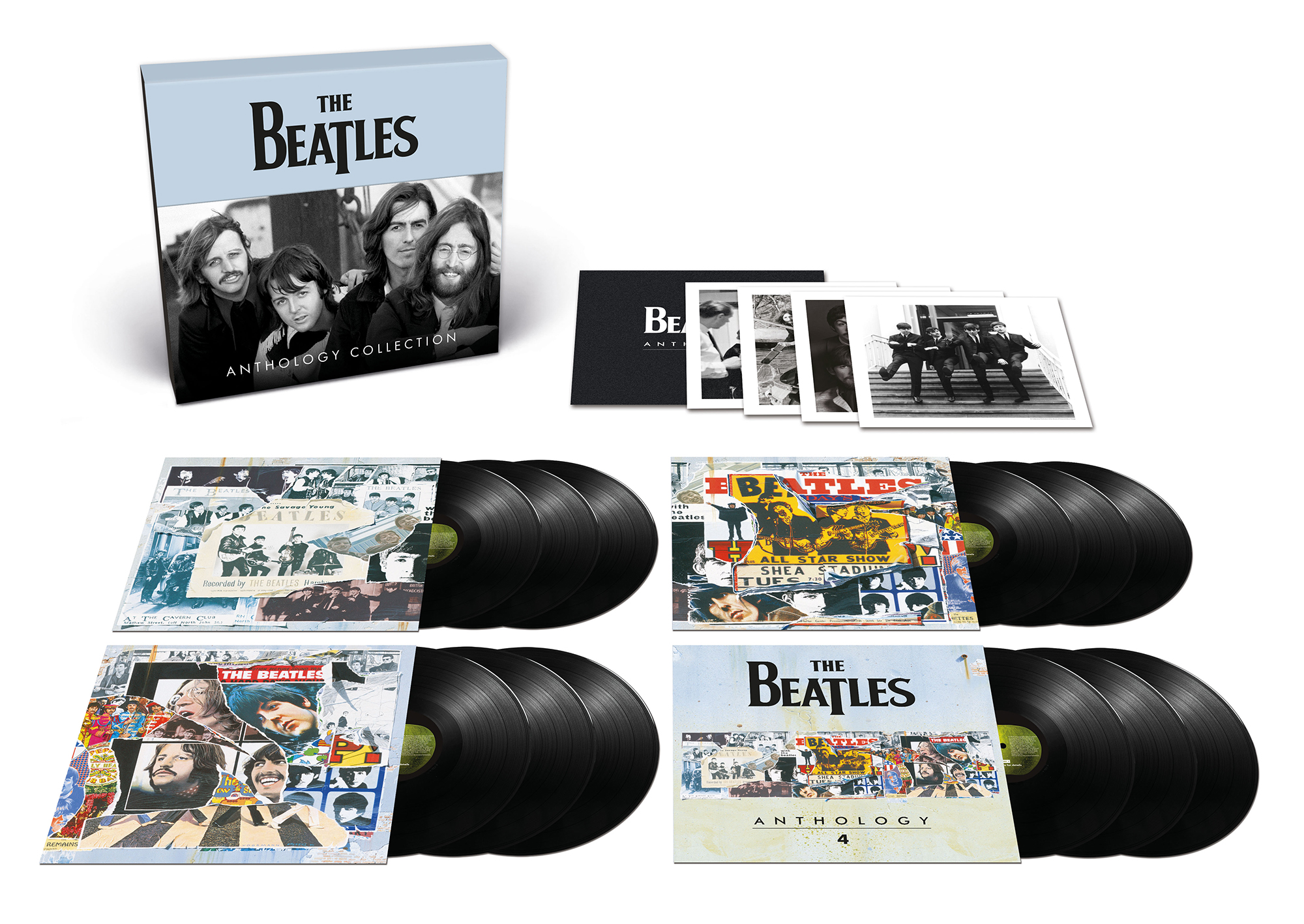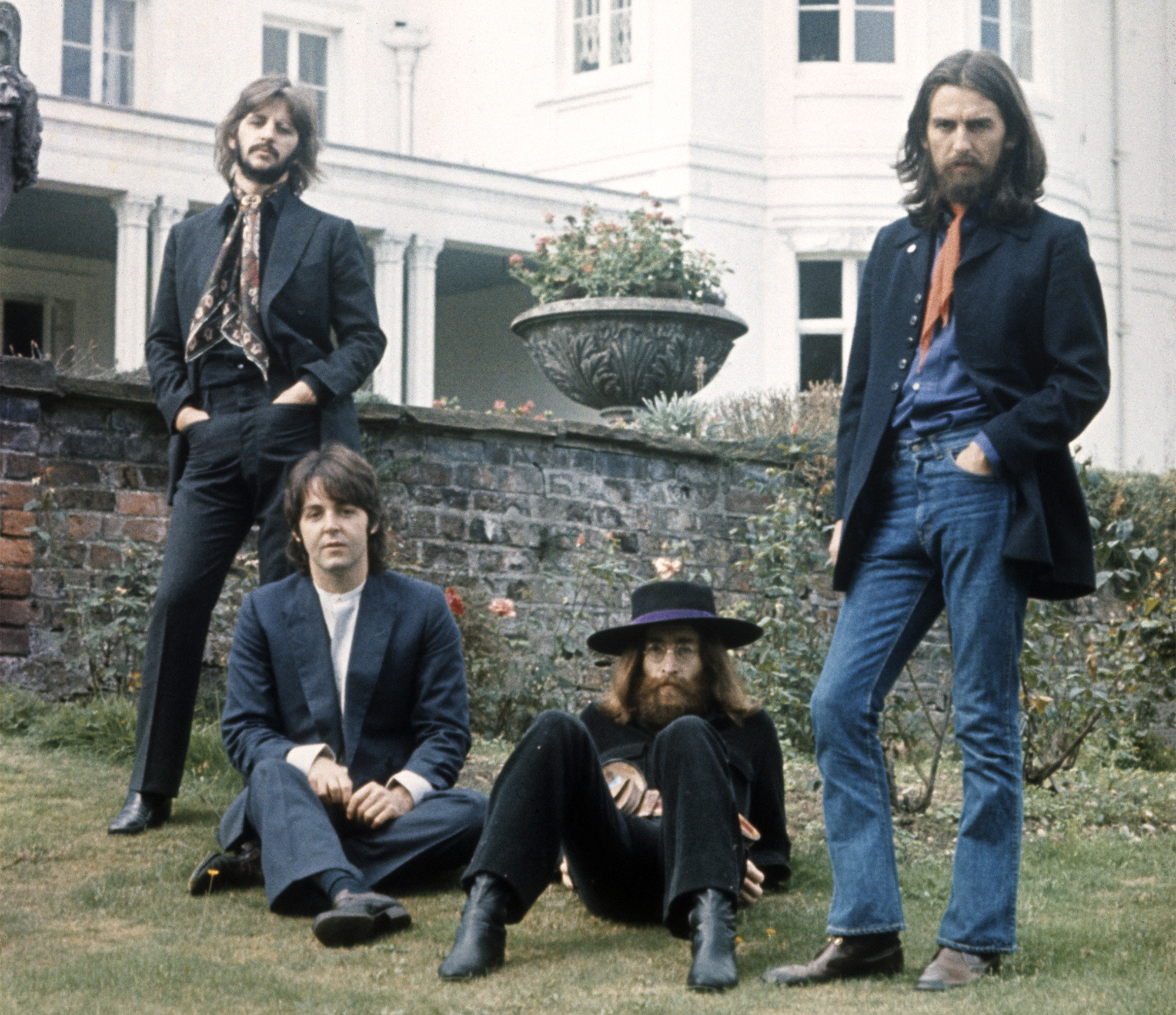“This has to be the last Beatles song.” Here’s what’s in the new Beatles Anthology episode — and Giles Martin tells what happened behind the scenes of the Fab Four's final single
Martin and director Oliver Murray shed light on Anthology's new Episode 9 and the Beatles' final record release

Hands both old and new have put their imprint on this fall’s 30th anniversary incarnation of The Beatles Anthology.
The 1995 docuseries, which was expanded to eight episodes for its home video release, is an outgrowth of longtime Beatles aide de camp and Apple chief Neil Aspinall’s proposed early ’70s project The Long and Winding Road, which was shelved due to animosities surrounding the Fabs’ breakup. It marked the first time the group — with John Lennon posthumously, of course — told its own story, and was fueled by two new singles: “Free As a Bird” and “Real Love,” both built from Lennon recording demos.
For the anniversary, the Anthology has added a ninth episode, directed by Oliver Murray, while the companion albums have grown with a fourth volume, overseen by Giles Martin — son of the late Beatles producer George Martin. It includes remixed versions of the singles as well as “Now and Then,” the purported “final” Beatles single that came out during 2023.
“People think there’s a huge planning system to what we do, and there really isn’t,” Martin told us when the latter was released. “We’re amateur at best — we just seem to get away with it. I suppose it has an element of high risk involved in it. I suppose I’m used to it; most of the work I do gets examined by people. But generally I get away with most things.”

The refreshed Anthology is not Martin’s first Beatles rodeo, of course. Having worked as an assistant for his father, he’s been working with the catalog since The Beatles: Rock Band in 2009 and also took part in recent reissue projects, including 50th anniversary editions of Sgt. Pepper’s Lonely Hearts Club Band, The Beatles (a.k.a. the White Album) and Abbey Road, as well as the 2022 Revolver: Special Edition, Peter Jackson’s acclaimed The Beatles: Get Back documentary project and accompanying Let It Be: Special Edition, and much more. He’s also helmed reissues for Paul McCartney and George Harrison (as well as the Beach Boys, the Rolling Stones and the Elton John Rocketman biopic).
It’s a tall order, not unlike a sacred duty. But after, really, a lifetime of being around the music, Martin says there’s no question about what his brief is on these projects.
“We don’t really discuss a plan, if you like, because it is what it is,” he explains. “My job is to represent as truthfully and as best I can what [the music] is. I never, ever wanted to change what the Beatles are playing. The heartbeat of the Beatles is always there.” That philosophy, he adds, has allowed for a kind of carte blanche whenever work begins on one of the endeavors.
All the latest guitar news, interviews, lessons, reviews, deals and more, direct to your inbox!
“The direction really isn’t discussed,” he adds. “In any of these projects what happens is I’ll do a mix and select outtakes and send them to all of them, then discuss. I suppose I’m used to it; most of the work I do gets examined by people. One thing I’ve always tried to get across is the fact they were a four-piece band, and a really good four-piece band. They were a great band. The sum of them together is better than them individually. They all play the right things, and very economical, with great thought and great sympathy. That’s what I want to come through.”
Not surprisingly, one of Martin’s highlights over the years was “Now and Then,” another Lennon demo that was considered for The Beatles Anthology but was deemed to need too much work to be finished in time. In the new Episode 9, in fact, McCartney, Harrison and Starr are even shown starting to work on it, with the former noting that it “needs so much work we’re a bit terrified to get around to it.”
It was technology Peter Jackson and his team created at their New Zealand Park Road Post Production studio that finally allowed the Beatles team to clean up and isolate Lennon’s vocal and piano enough to build a song around it, using elements that Harrison, who died in 2001, had recorded during the mid ’90s, along with new contributions by McCartney and Starr.
“It was pretty much a new version of the song,” says Martin, who wasn’t even aware of its existence until McCartney played it to him during May 2022. “The things that were kept were George’s guitar, acoustic and electric, and obviously John’s voice, and I think that was about it, really. Paul redid the bass and Ringo redid the drums.
“It was only when we finished it and some people heard it and, ‘Omigod, this is gonna be huge!’ — that was the only time I remember thinking, ‘Okay…’
“I think had I thought that way to begin with I’d probably be a little nervous about it. But I’ve got Paul and I love him dearly and I have his trust, which I don’t take for granted. Whatever you do you hope it’s good enough. I’m working with some pretty good people, you know what I mean? So it’s trying to live up to the standards.”

For Anthology Episode 9 director Murray, meanwhile, “Now and Then” represents “a full circle moment.” He came into the Beatles camp as the director of a short promotional film that accompanied “Now and Then’s” release. He was then approached to create a new Anthology episode, which serves as a kind of epilogue and coda to the series in documenting the making of the series, including the recording of all three “new” songs with producer Jeff Lynne.
“It kind of relies on an understanding of exactly what happened throughout the ’90s, principally,” Murray says via Zoom from England. “But also Episode 9 needed to offer a new layer of self-reflection and step out of the familiar chronology that was so wonderfully done... It was a chance to sort of poke holes in the mythology, sometimes, and be able to linger on a subject where the earlier episodes couldn’t, ’cause they had the march of this story to tell.”
Murray considers the nearly hour-long episode “a ’90s time capsule,” showing the three surviving Beatles meeting, sitting on a blanket playing ukuleles on the lawn of Harrison’s Friar Park estate, or at a previously unseen gathering from 1994 in Abbey Road Studios. He also makes use of individual interviews that were done to promote Anthology and unearths a few grails — including a vintage clip of McCartney playing part of “Helter Skelter” acoustically and a close-up of Harrison coming up with his electric guitar part for “Real Love.”
“I love that,” he says. “It’s thin and powerful at the same time, his elasticity in bending the strings, but also a mighty sound. I almost forgot about the ‘Real Love’ stuff because I was so immersed in everything, but to put everything from the ’90s sessions together was fantastic — especially given that I started with the ‘Now and Then’ short film.”
Murray eschewed the idea of new interviews with McCartney and Starr. “It would have messed with the sense of time and place in this material,” he notes. And he feels that the punctuation mark Episode 9 puts on the Anthology is showing the three surviving Beatles were truly reunited, emotionally as well as physically, by the project.
“Even though they really hadn’t spent much time together at all... they sort of slip back in like a well-fitting glove with each other,” the director says. “It was an opportunity to see them talk about the weight of being a Beatle — dare I say the cost of being a Beatle.
“Obviously, it’s very melancholic when you hear just how difficult it is for them to embark on Anthology without John. Some of my favorite stuff is George talking about how cathartic it is to be able to use Anthology almost like therapy, but there’s always the anchor of John not being there, and how it reminds them that John never had this opportunity to look at their own legacy from outside of its shadow.

“It’s not an ending. It’s a handover,” Murray adds. “My North Star was my sense of this being a conversation between one generation and the next. Their songs are like a shared cultural language that gets passed on, and it evolves. That’s probably the hardest thing, to service people coming to the story for the first time and the people who know way more than I do — the superfans who know everything and are thirsty for even more.”
A new significant Beatles project has become a tradition every fall, and there’s more in the vaults to be considered in the future. But one thing Martin says we won’t see, or hear, is another “new” song à la the Anthology singles — despite Peter Jackson intimating otherwise when “Now and Then” was released.
“There’s no bigger Beatles fan than Peter Jackson, so, God bless him, he’d love that,” Martin says. “But it wouldn’t be the Beatles. What makes [‘Now and Then’] the Beatles is the fact George is there. We could take a John demo and Ringo and Paul could play on it, but that wouldn’t be the Beatles. You could take a George demo whatever, and it wouldn’t be the Beatles. You’d have to synthesize something.
“Why this song sounds like the Beatles is because it is the Beatles. There’s no Beatles plug-in, if you know what I mean. And lyrically it sounds like the last Beatles song. I think if we did things other than that, it wouldn’t be the Beatles. So this has to be the last Beatles song — sorry, Peter.”
The expanded The Beatles Anthology Collection is released today, November 21. The Beatles Anthology begins streaming with Episodes 1–3 on Wednesday, November 26 on Disney+, followed by Episodes 4–6 on Thursday, November 27 and Episodes 7–9 on Friday, November 28.
Gary Graff is an award-winning Detroit-based music journalist and author who writes for a variety of print, online and broadcast outlets. He has written and collaborated on books about Alice Cooper, Neil Young, Bob Seger, Bruce Springsteen and Rock 'n' Roll Myths. He's also the founding editor of the award-winning MusicHound Essential Album Guide series and of the new 501 Essential Albums series. Graff is also a co-founder and co-producer of the annual Detroit Music Awards.


